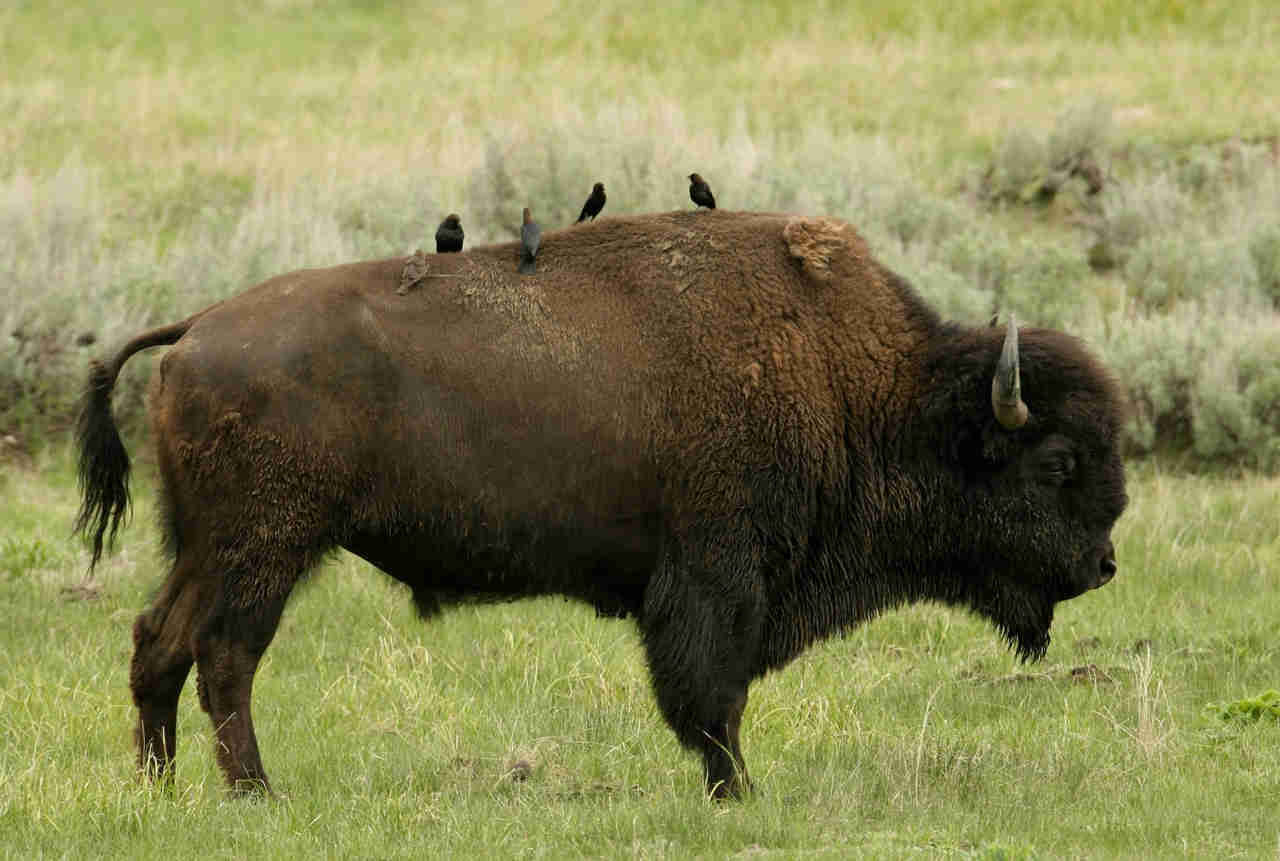
North American
Bison Impact
The extinction of four species of bison (Bison antiquus, Bison latifrons, Bison occidentalis, and Bison prices) is linked to natural selection. Humans were almost exclusively accountable for the near-extinction of the American bison in the 1800's.
At the beginning of the 19th century, tens of millions of bison roamed North America. Humans slaughtered an estimated 50 million bison, generally for their meat or pelts. Railroads were advertising "hunting by rail", where trains encountered large herds alongside or crossing the tracks. Men aboard fired from the trains roof or windows, leaving countless animals to rot where they died.
The overhunting of the bison reduced their population to hundreds.
Attempts to revive the American bison, however, have been highly successful. Farming of bison has increased their population to nearly 150,000. The American bison is therefore no longer considered an endangered species.
They graze heavily on native grasses and disturb the soil with their hooves, allowing many plant and animal species to flourish. Bison are always moving, they don’t stay in one place for very long. So, rather than eating the grasses down in one place, bison graze on the ground cover that would normally remove nutrients from the ground. They naturally remove excessive growth, thus allowing more room for healthy plants and grasses to grow.